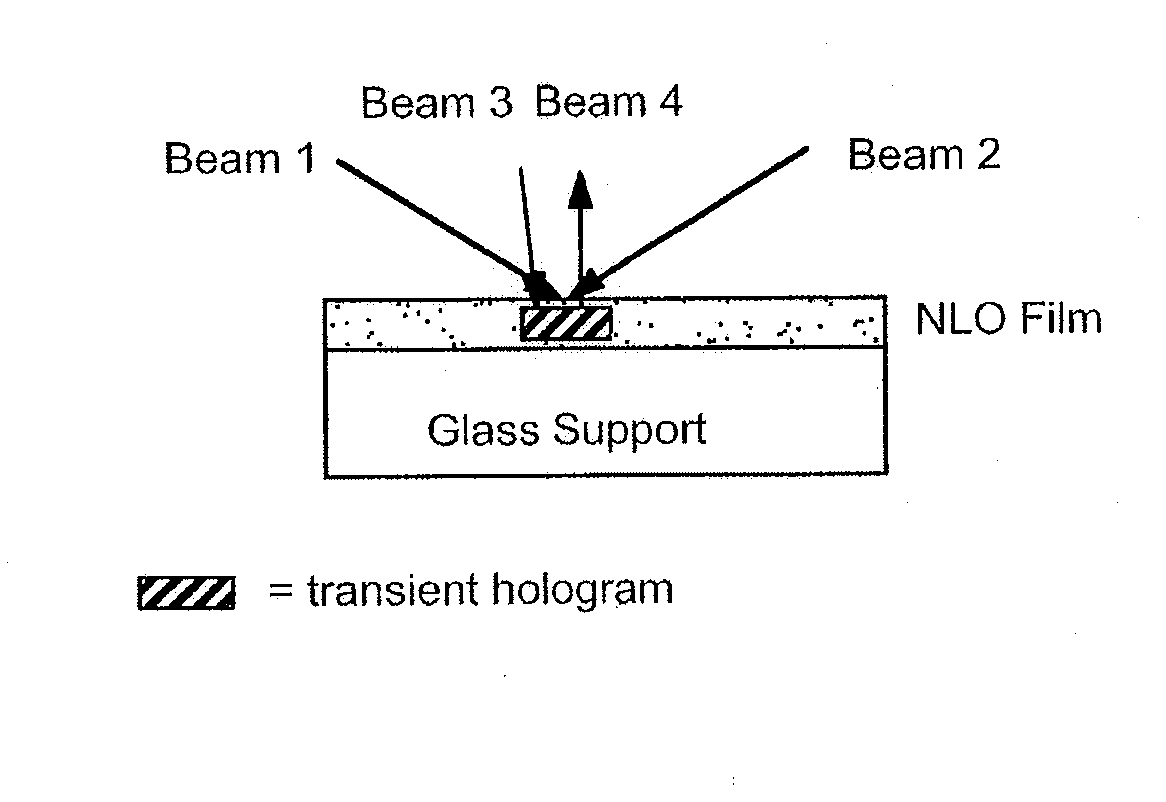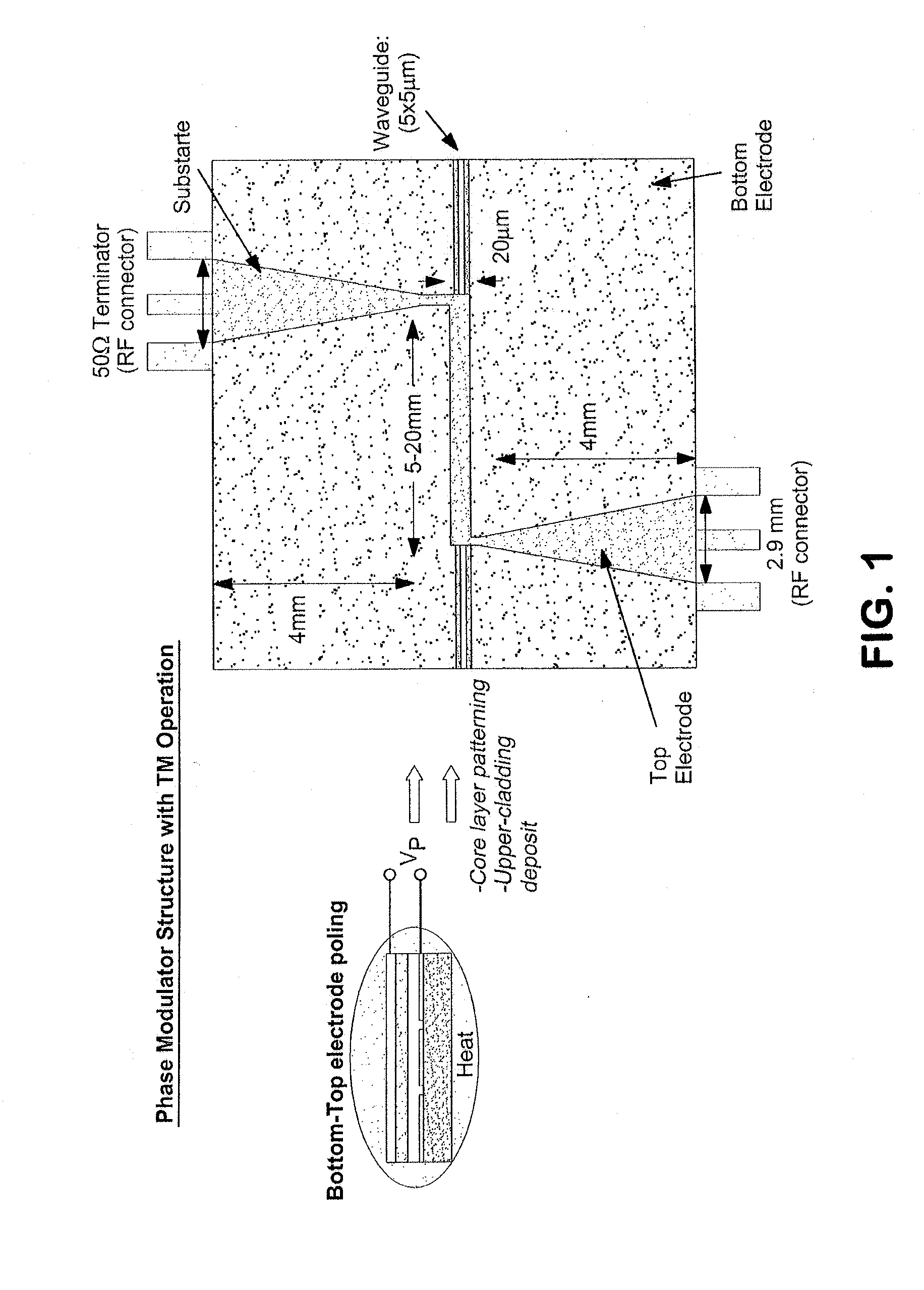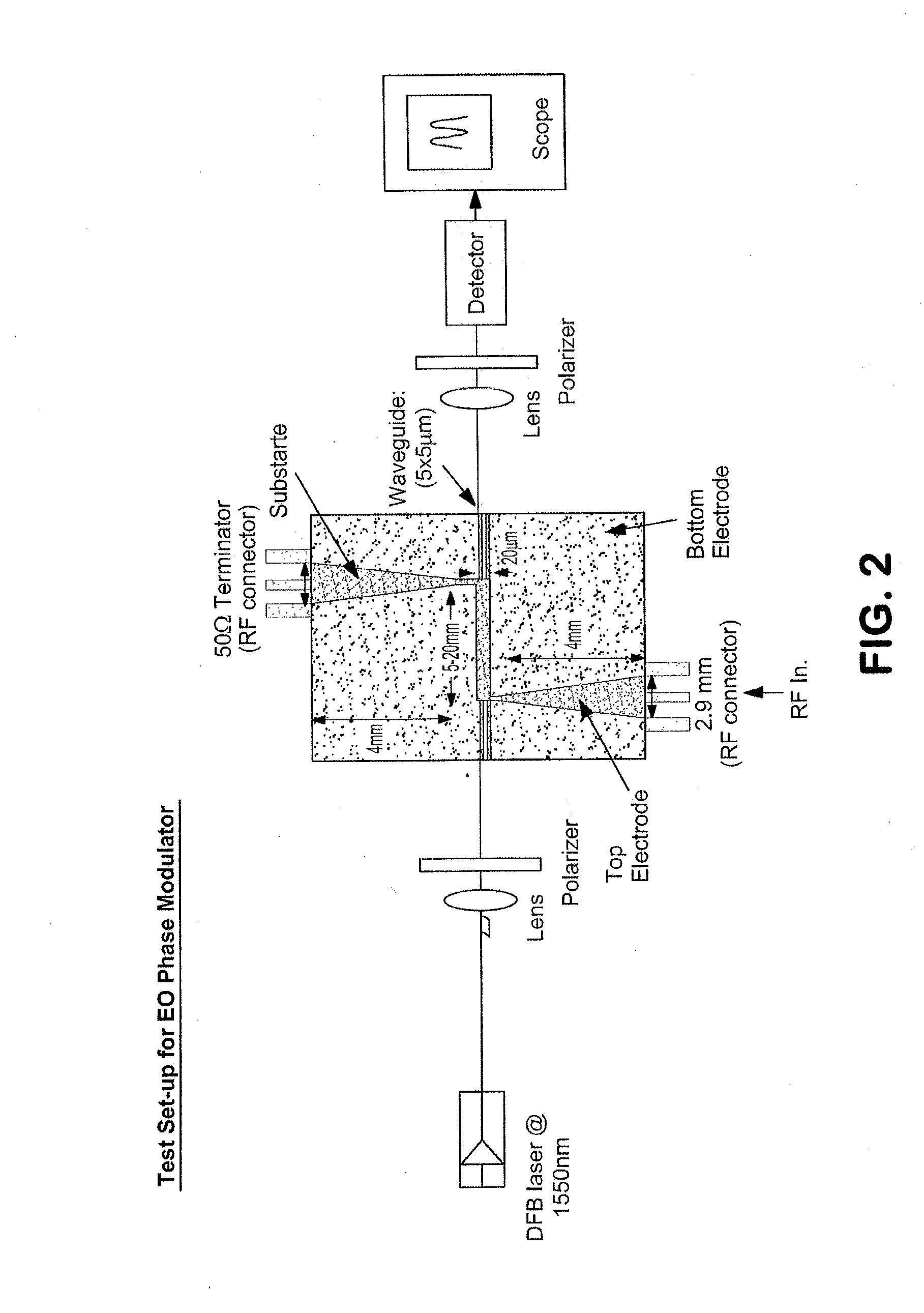Stable Free Radical Chromophores and Mixtures Thereof, Processes for Preparing the Same, Nonlinear Optic Materials, and Uses Thereof in Nonlinear Optical Applications
a free radical chromophores and free radical chromophores technology, applied in the direction of polarising elements, sustainable manufacturing/processing, instruments, etc., can solve the problems of limited production of high material hyperpolarizabilities (sup>(2)/sup>), molecule formation of multi-molecular dipolarly bound aggregates that cannot be dismantled via realistic field energies, and extreme difficulties in translating microscopic molecular hyperpolarizabilities into ma
- Summary
- Abstract
- Description
- Claims
- Application Information
AI Technical Summary
Benefits of technology
Problems solved by technology
Method used
Image
Examples
synthesis example 1
[0083]A non linear optical chromophore according to an embodiment of the present invention was synthesized according to the following reaction scheme:
[0084]In the reaction scheme set forth above, each R represented a mesityl (i.e., 2,4,6-trimethylphenyl) group. Similar syntheses can be carried out according to this and other disclosed reaction schemes but with different R groups by modifying the first step to employ a different aminated R group (i.e., R—NH2). Thus, for example, in place of mesitylamine, the reaction scheme can be carried out with 2-ethylhexylamine so that each R group is a 2-ethylhexyl group. Also, for example, in place of mesitylamine, the reaction scheme can be carried out with cyclohexylamine so that each R group is a cyclohexyl group, etc. Additionally, as will be understood by those of ordinary skill in the art, while various structures and intermediates shown in this and other syntheses described herein contain static bond representations, the various intermed...
synthesis example 2
[0087]A second example of synthesis of a nitroxyl radical in the Perkinamine family is related below, in which each spacer (R) group is a cyclohexyl group. Bis-2,6-dicyclohexylaminonaphthalene is prepared by reaction of 2,6-dihydroxynaphthalene and cyclohexylamine, wherein R—NH2 represents cyclohexylamine, and the remainder of the reactions of the general scheme shown in Synthesis Example 1 are carried out. The final step is described below.
[0088]0.200 g (0.397 mmol) of a compound of the following formula wherein each R represents a cyclohexyl group:
was added to 0.042 g (0.397 mmol) of anhydrous sodium carbonate in 9 mL of dry acetonitrile. This was left to stir for 5 min. before 0.180 g (0.727 mmol) of picryl chloride was added to the mixture. The reaction was heated to 85° C. for 18 hours at which point, a black precipitate forms out of solution. Acetonitrile was removed in vacuo and the black solids were washed with 50 mL of water, then filtered. The mother liquor is a green-yell...
synthesis example 3
[0091]A non linear optical chromophore according to an embodiment of the present invention is synthesized according to the following reaction scheme:
PUM
| Property | Measurement | Unit |
|---|---|---|
| length | aaaaa | aaaaa |
| electron affinity | aaaaa | aaaaa |
| chemical bond | aaaaa | aaaaa |
Abstract
Description
Claims
Application Information
 Login to View More
Login to View More - R&D
- Intellectual Property
- Life Sciences
- Materials
- Tech Scout
- Unparalleled Data Quality
- Higher Quality Content
- 60% Fewer Hallucinations
Browse by: Latest US Patents, China's latest patents, Technical Efficacy Thesaurus, Application Domain, Technology Topic, Popular Technical Reports.
© 2025 PatSnap. All rights reserved.Legal|Privacy policy|Modern Slavery Act Transparency Statement|Sitemap|About US| Contact US: help@patsnap.com



